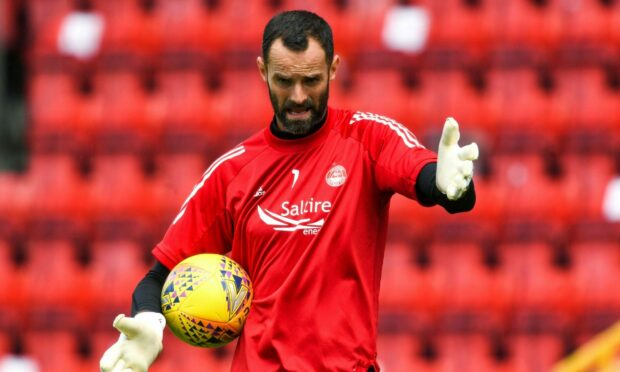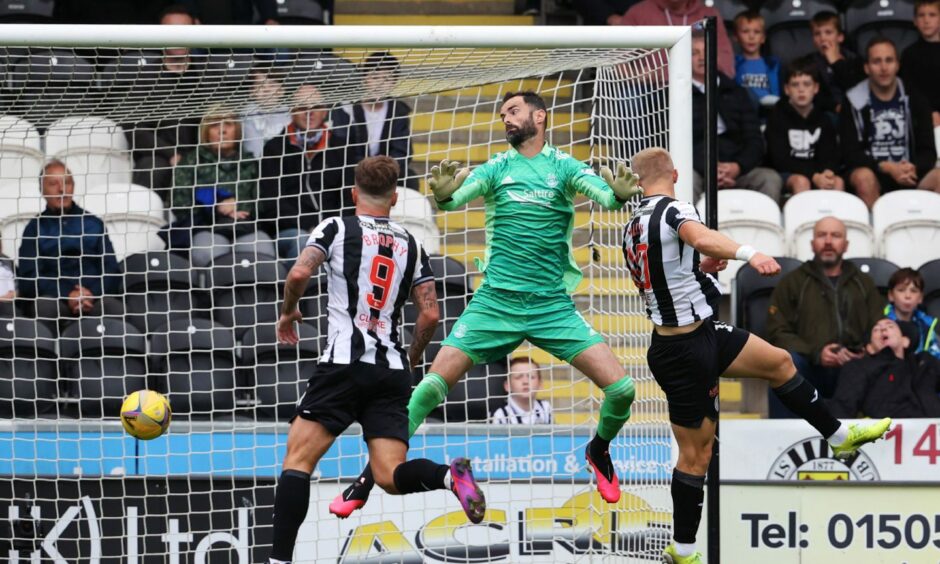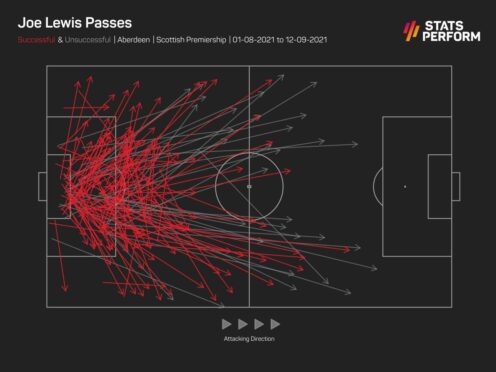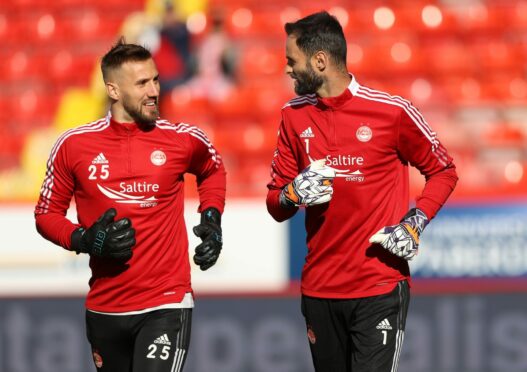Joe Lewis has been singled out for praise by both his manager and his defence after two impressive displays since being restored to the role of Aberdeen’s number one.
With his club toiling and having gone eight games without a win, the club captain was taken out of the firing line by manager Stephen Glass ahead of the October 3 meeting with Celtic (2-1 Pittodrie loss).
Being outside the starting 11 was new territory for Lewis, who had played whenever he was available since moving to Pittodrie in the summer of 2016.
Dons fans will have their own view on whether the manager’s call was the correct one, but they must surely all be in agreement the Lewis which has returned to the team for the last two games (a 1-0 home win over Hibs and 2-2 draw with Rangers at Ibrox) has looked every bit the lynchpin they have been accustomed to watching.
An erratic display at St Mirren on September 26 highlighted a man who looked to be lacking in confidence. It was a time where it seemed every mistake made by an Aberdeen player was being punished and it should come as no surprise to see it take its toll.
A case can be made that the desire to play out from the back at every turn at the start of this season was not playing to Lewis’ strengths either, but it does seem as though corrective action was taken prior to the losses to St Johnstone and St Mirren.
Even before being left out, Lewis returned to comforts of kicking game
The Dons goalkeeper, in all likelihood following a discussion with the club’s coaching team, reverted to a kicking style which he is far more comfortable with, showing more willingness to hit the ball longer:
It is clear the number of passes being made have been consistent all season in the Scottish Premiership, but the accuracy has dipped significantly in Lewis’ last four appearances.
Why?
Well, take a look at the last two columns above. The long passes being made have been markedly higher in the last four appearances compared to the first five games.
We can see how the two approaches have differed in the two images below.
The first image shows the tactics of the team in the first five games of the campaign. The passes completed in red show just how often Lewis was involved as the modern sweeper keeper.
But in the second picture below, the change of approach is visibly different. Naturally, there are still short passes to be made when possible, but there is also a clear switch to simply clearing the ball downfield being deployed, too.
It took a few games, but it does seem to be paying off with results improving.
Stats suggest the dependable Lewis we’ve been used to is back
We can debate the reasons for the change in goal, but it is clear Lewis has responded excellently to being left out.
Glass hinted at a recall for Lewis for the trip to Dundee on October 16, only for the goalkeeper to take ill and miss the game.
The fact the Dons lost 2-1 to the Dark Blues likely cemented his manager’s decision to bring him back into the fold.
Woods may be more comfortable with the ball at his feet, but an on-form Lewis remains one of the best goalkeepers in the country. His position as the club captain and first choice goalkeeper at Pittodrie has been hard-earned.
He has shown why he is the first choice since being restored to the starting 11.
The table above shows a goalkeeper who was conceding – according to Opta’s xGOT metric – far more goals than he should’ve been before being left out (on the left). Woods, his replacement, conceded four times from five shots of target during his two games – which Opta reckons is 1.5 goals more than he should have.
However, Lewis has performed well against his xGOT stats in the pair of matches since he has been back in the fold. The stats show he’s making the saves he should be making, and there have been no unforced errors, to borrow a tennis term.
Lewis did not face a single effort from Hibernian in Aberdeen’s 1-0 win at Pittodrie last weekend, but what statistics do not show you is how involved he was.
He commanded his area and put his body on the line on more than one occasion for the cause with one collision with team-mate Ross McCrorie resulting in a lengthy stoppage in play so he could receive treatment.
He was busier at Ibrox on Wednesday in the 2-2 draw against Rangers, but Lewis was again excellent with his save from Connor Goldson a highlight of another assured display.
There’s more than just a tweak of an approach to kicking the ball, which has led to the Lewis fans have come to know returning.
But it seems certain that particular aspect will continue for the foreseeable future.






